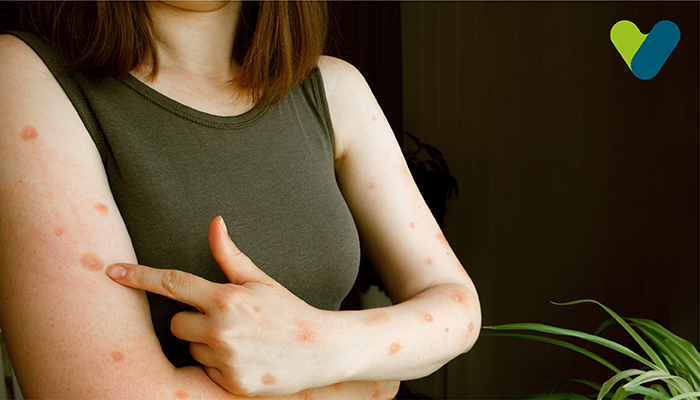Human Monkeypox (MPXV) is a disease caused by infection with the Monkeypox virus. It is rarely fatal, and although named "Monkeypox," the source of the disease remains unknown. This disease was discovered in 1958 when two outbreaks of a pox-like illness took place in the colonies of monkeys kept for research. However, African rodents and monkeys might harbour the virus and transmit it to a person.
In 1970, the first case of a human contracting Monkeypox was recorded, and it was still considered a rare disease. Monkeypox was reported in people across central and western African countries in the following decades before the recent 2022 outbreak. Previously, almost all human cases across continents outside Africa were associated with international travel to countries where the disease had occured or with imported animals.
How it spreads
Monkeypox spreads through direct contact and exposure to an infected person's respiratory droplets, skin lesions or bodily fluids. It may also spread from infected animals by handling infected meat or bites or scratches. Most studies have established that the virus primarily requires person-to-person contact, so it is less likely than other viruses like SARS-CoV-2, which causes COVID-19 to spread among large numbers of people who do not have close physical contact. However, some research has suggested that it may also spread through the airborne route, although it's too early to confirm.Monkeypox Symptoms
The virus is an infectious zoonotic virus in the genus orthopoxvirus that can occur in humans and animals. The time from exposure to onset of symptoms varies between five and twenty-one days, and the duration of symptoms is typically two to four weeks. In some cases, there may be mild Monkeypox symptoms or no symptoms at all.Infected patients get a limited-time rash, which may appear on or near the genitals (testicles, penis, vagina, and labia) and/or anus. This rash could also occur on parts such as feet, hands, face, chest, or mouth. This rash undergos several stages, such as scabs, before it heals. Initially, the rash may look like a blister or pimple and may be itchy or painful.
Other symptoms include:
- Fever
- Swollen lymph nodes
- Rash, which first forms blisters and subsequently crusts
- Muscle pain
Highlights
While Monkeypox cases are spreading globally and causing panic, the infection clears up on its own in most cases. There are two strains of the virus. The endemic strain in several West African countries is less severe than in the Congo basin.Monkeypox could be highly severe in young children, especially in those with poor nutritional status. In earlier years, fatal cases have occurred, primarily among African children. The virus can be transmitted from the onset of symptoms until all the lesions have scabbed and fallen off. However, there is some evidence of transmission for more than a week after the lesions have crusted.
Differences
The virus symptoms are similar to smallpox but milder. The virus is part of the same family of viruses as the variola virus. On the other hand, the Monkeypox rash can also be confused with the Chickenpox rash, but both are unrelated. Both manifest a painful skin rash, but Monkeypox is caused by orthopoxvirus, while a herpes virus causes Chickenpox.Monkeypox Diagnosis
PlYour doctor can initially rule out other rash-producing illnesses such as Chickenpox or measles and screen for sexually-transmitted diseases such as HIV, syphilis and others. To diagnose Monkeypox, the technician will extract a tissue sample from an open sore and send it to a lab for RT PCR (Real-time polymerase chain reaction) testing. You may also need a blood sample to check for the antibodies your immune system produces to fight infection. Alternatively, medical professionals may conduct a biopsy if feasible. The first step is for patients to get a basic full-body checkup with the RT PCR test.Patients are also required to provide the following details:
- a) Date of beginning of fever
- b) Date of beginning of the rash
- c) Specimen collection date
- d) Current health status of the individual (stage of rash)
- e) Age
Monkeypox Treatment
While most virus symptoms resolve themselves in time, doctors prescribe antiviral agents to patients infected with Monkeypox disease after analysing the results of the basic full-body checkup and the RT PCR. Although the virus does not display severe symptoms and has a low mortality rate, there is no known cure or specific treatment to date.Prevention
Take the following precautions to avoid getting infected with Monkeypox:- Avoid close contact with people who are infected or their personal belongings
- Wash your hands frequently and thoroughly
- Wear a mask and gloves or other protection when caring for someone with monkeypox or disease symptoms
